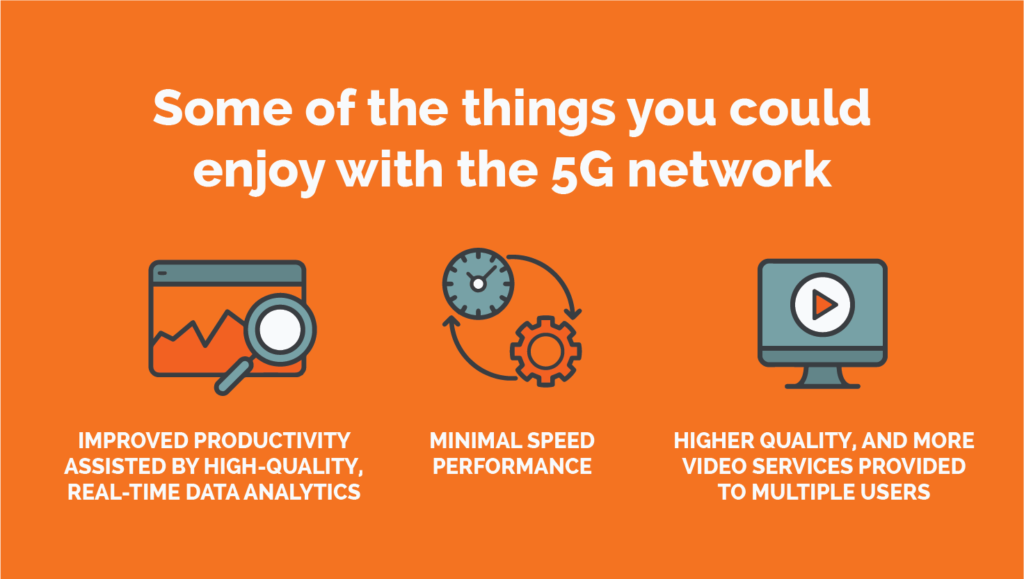5G Speed In Australia
5G Speed In Australia
iSelect does not compare all products in the market. Not all products are available at all times.
The need for speed
According to the Bureau of Statistics, there are almost 27 million handsets in Australia.1http://www.abs.gov.au/ausstats/[email protected]/mf/8153.0/ Hold the phone, that’s more than the population!
Although the number of broadband subscribers has remained steady over the past few years, our demand for data has surged. 2016 was something of a tipping point for the Internet. Mobile overtook Desktop with just over half of all traffic coming from mobile devices.2http://au.advertising.yahoo.com/post/161493428224/know-your-data-yahoo7s-latest-insights-series
The future is mobile, and it is data-hungry.
Driven by the usual Social Media suspects and streaming apps like Netflix, YouTube and Spotify, our appetite for fast mobile broadband is insatiable and only getting bigger.
With the torrents of data flowing through the network to our devices comes a need for speed. 4G might have blown our hair back in 2011, but now that our home screens are occupied with a range of entertainment and social media apps, expectations are rising.
Which brings us to the next technological phase of mobile data: 5G.
Just how fast is 5G?
There are many benefits and promises of upcoming 5g networks, but one of the most important factors for the average customer is speed.
After all, phone calls rarely drop out anymore on the 4G network, but buffering is up there in the top 5 of first-world problems.
Tomorrow’s 5G is the great leap forward for Australia’s mobile broadband network. More than just an incremental step, as shown below, in theory 5G could be 10 times faster than 4G.3https://www.gsmaintelligence.com/research/?file=141208-5g.pdf
Actual speeds will vary once the network is up and running, but Telstra has already achieved 3 Gigabites Per Second (Gbps) during tests on the Gold Coast in 2018.4https://www.telstra.com.au/aboutus/media/media-releases/Telstra-offers-Australias-first-taste-of-5G These kinds of download speeds will pave the way for applications we can barely conceive of today, like virtual reality or driverless cars.
Of course, we’ll have to wait for 5G enabled devices, so in the short-term it all comes back to speed.
5G promises to be a turbo-charged quantum leap forward in mobile broadband, with speed, efficiency, and reliability but into its processing.
4G Vs. 5G
On all accounts, 5G is superior to 4G and speed is just the beginning. 5G’s minimal speed performance is expected to be around 100 Megabits Per Second (Mbps), around as fast as the best performance you can expect on your 4G network today in an urban area.
5G will also provide higher quality, and more video services provided to multiple users with full mobility, even at high speed.
We’ll enjoy delivery of critical communications assured by low latency and ultra-reliable networks,5https://www.communications.gov.au/documents/5g-enabling-future-economy and improved productivity assisted by high-quality, real-time data analytics.

Lightyears ahead of previous generations
It’s true that 5G stands on the shoulders of the mobile generations that came before it.
While each generation of wireless technology has been faster, more secure and more reliable than the previous, 5G is far more than an incremental improvement – it will be far superior in all areas.
Data services were first introduced with 3G, along with web browsing, email, video downloading, picture sharing and other Smartphone technologies.
All this was done at a modest 2Mbps. Mind you, this was impressive at the time, but compared to 5G, it’s cassette versus compact disc – many thousands of times faster, as shown in the graph above.
What will we do with all that speed?
In the short-term, we’ll just enjoy the lightning-fast speed with more reliable connections.
Imagine being at the football along with thousands of other spectators and not having to worry about call drop-outs, buffering of live streaming, or simply getting a connection.
But the most exciting thing about 5G technology is the next generation of applications that technology companies will be able to create with the added network capacity. Over the next few years you’ll see purpose-built 5G and other network-connected devices, with reduced power requirements that will provide flexible coverage across different spectrum bands.
This is also known as the Internet of Things (IoT) and it’s expected to produce productivity benefits and support integration between industry sectors.6https://www.communications.gov.au/documents/5g-enabling-future-economy

.svg)



